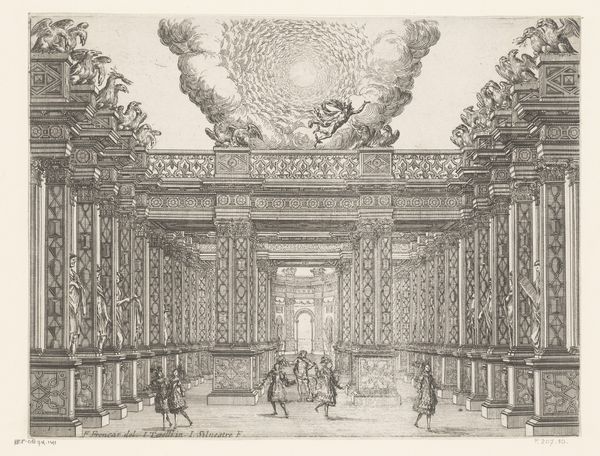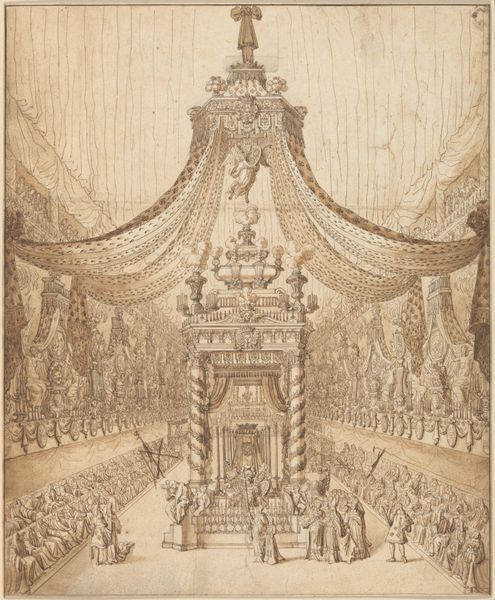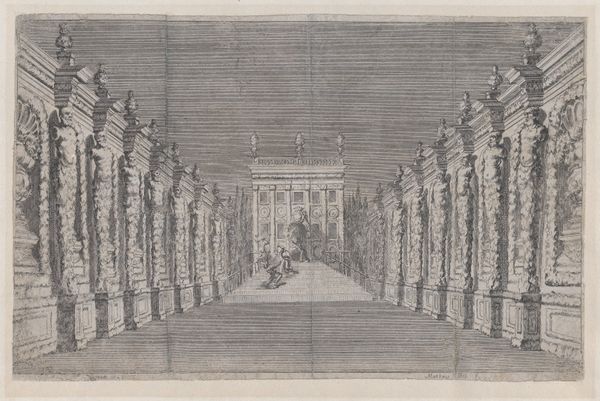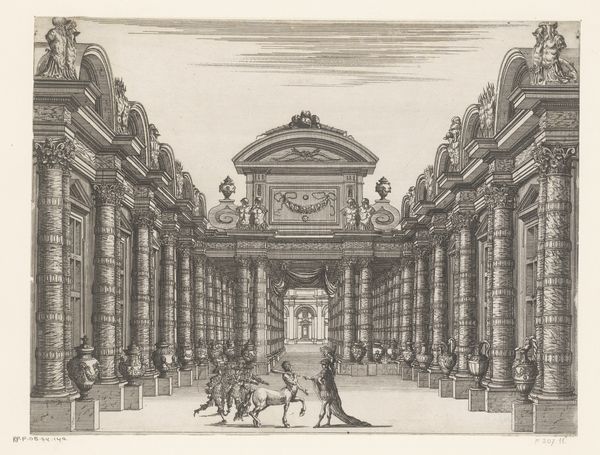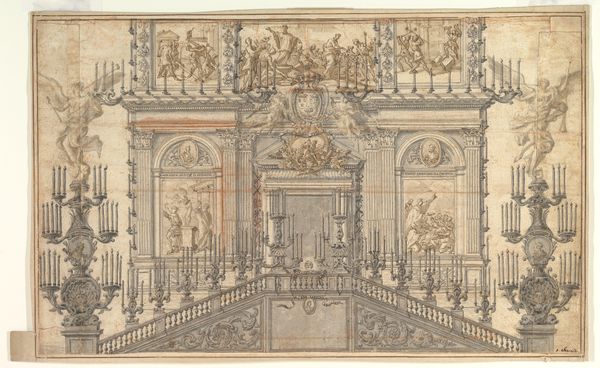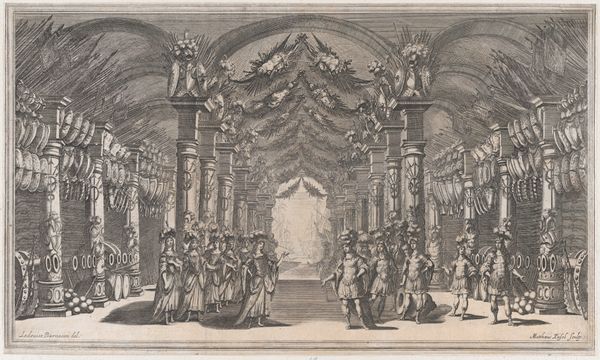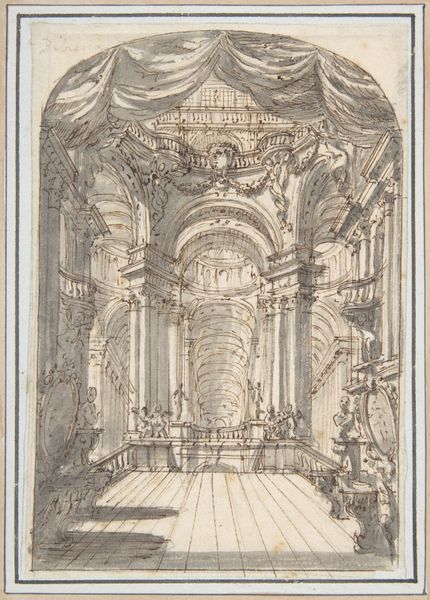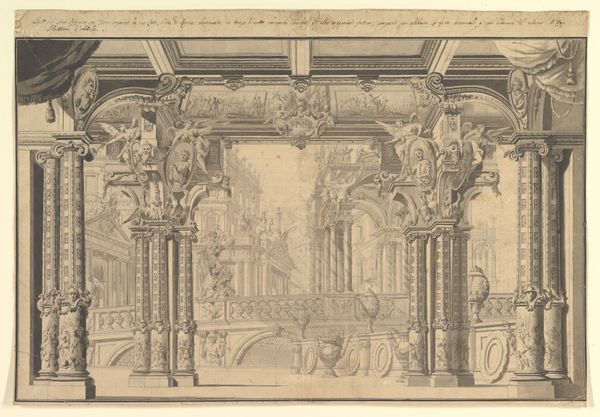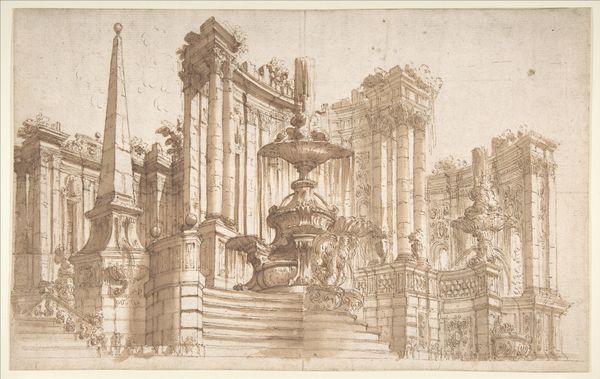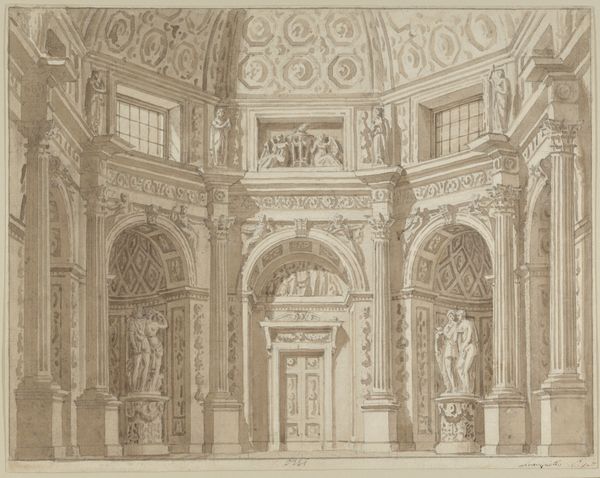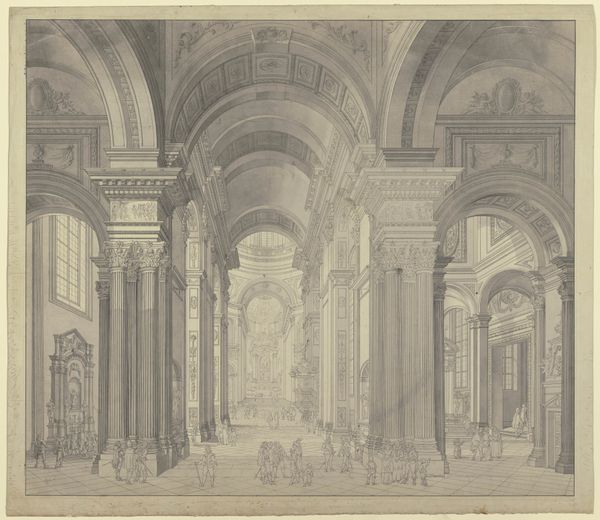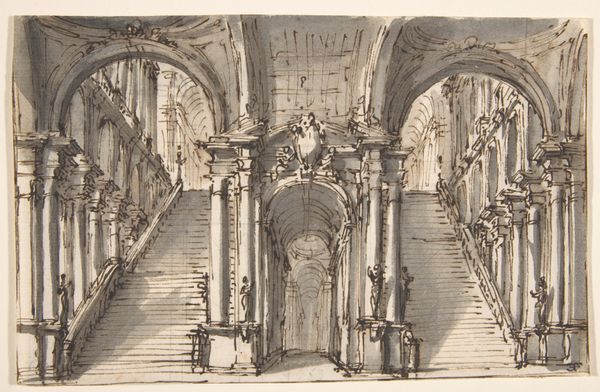
drawing, print, architecture
#
drawing
#
baroque
# print
#
cityscape
#
genre-painting
#
history-painting
#
architecture
Dimensions: 13-5/8 x 19 in. (34.6 x 48.3 cm); 14 x 20
Copyright: Public Domain
Curator: Right, let's have a look at Ferdinando Galli Bibiena's "Stage Setting with Ballet." It's a drawing and print dating sometime between 1657 and 1743. It now resides at the Metropolitan Museum of Art in New York. Editor: It feels…dreamlike. The overwhelming ornamentation almost dissolves the architectural structure. Like spun sugar becoming a building. Curator: Precisely. Consider Bibiena’s influence. As a member of a prominent family of stage designers, he, alongside others, completely redefined theatrical space. Baroque sensibilities favored dynamism, excess. And this work is indicative of set design trends of the era and that shift. Editor: Look at those tiny figures against the immensity of the imagined space. Dozens of ballet dancers scattered on the checkerboard floor like pawns about to be swept off a game board. I'm curious about the material. It almost seems monochrome. Curator: A critical lens here would make one appreciate the labor behind such pieces: From the initial sketch and ink to the meticulous printmaking processes that enabled its wider distribution and its use by other scenic designers throughout Europe. Editor: So, not just a fleeting image, but part of a larger material culture. It reminds me of piranesi's etching works. Did stage design inform Bibiena’s other works as well? Curator: Indubitably, it facilitated a kind of knowledge exchange that affected architecture as a whole. Remember that theatres, palaces, and gardens all spoke the same ornamental language. It blurs the lines between what is useful versus artistic Editor: And this is where the tension arises between practical blueprints versus expressions that convey grandeur or other emotional effects. What did art mean to folks then, though? Was it always separate, as it has now? Curator: A complicated relationship. It could reinforce class structures of patronage while simultaneously functioning as a mode of aspirational engagement for broader publics. Theaters served sometimes as locations of intense sociopolitical discourse! Editor: It’s rather profound seeing this stage not as background but the main event. Almost as if these performers were extras. Like in our minds we think they’re gonna become players someday? Curator: Exactly. By analyzing materials like these, one can reconstruct the evolution of both scenographic practices but moreover comprehend transformations occurring across broader artistic cultures. Editor: I appreciate how such grand ambitions, once ephemeral for live theatre audiences, survives within paper folds. Makes one consider how truly theatre becomes less theatre. Curator: Certainly an evocative interpretation, drawing us deeper into these cultural artifacts’ complex life cycles within social worlds old and present.
Comments
No comments
Be the first to comment and join the conversation on the ultimate creative platform.
